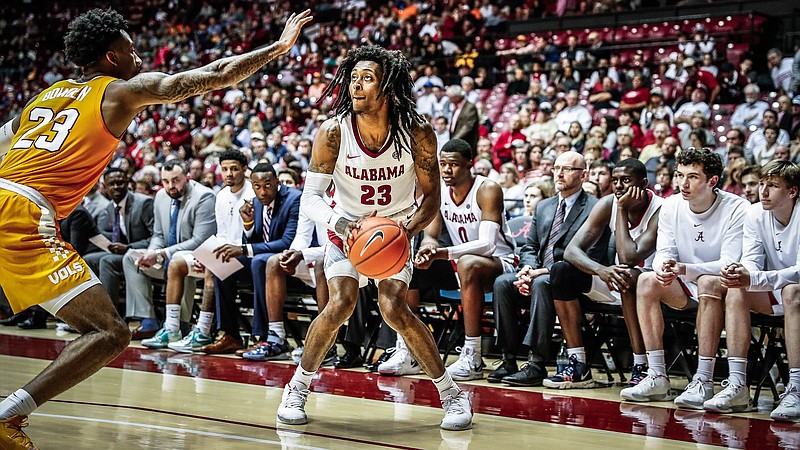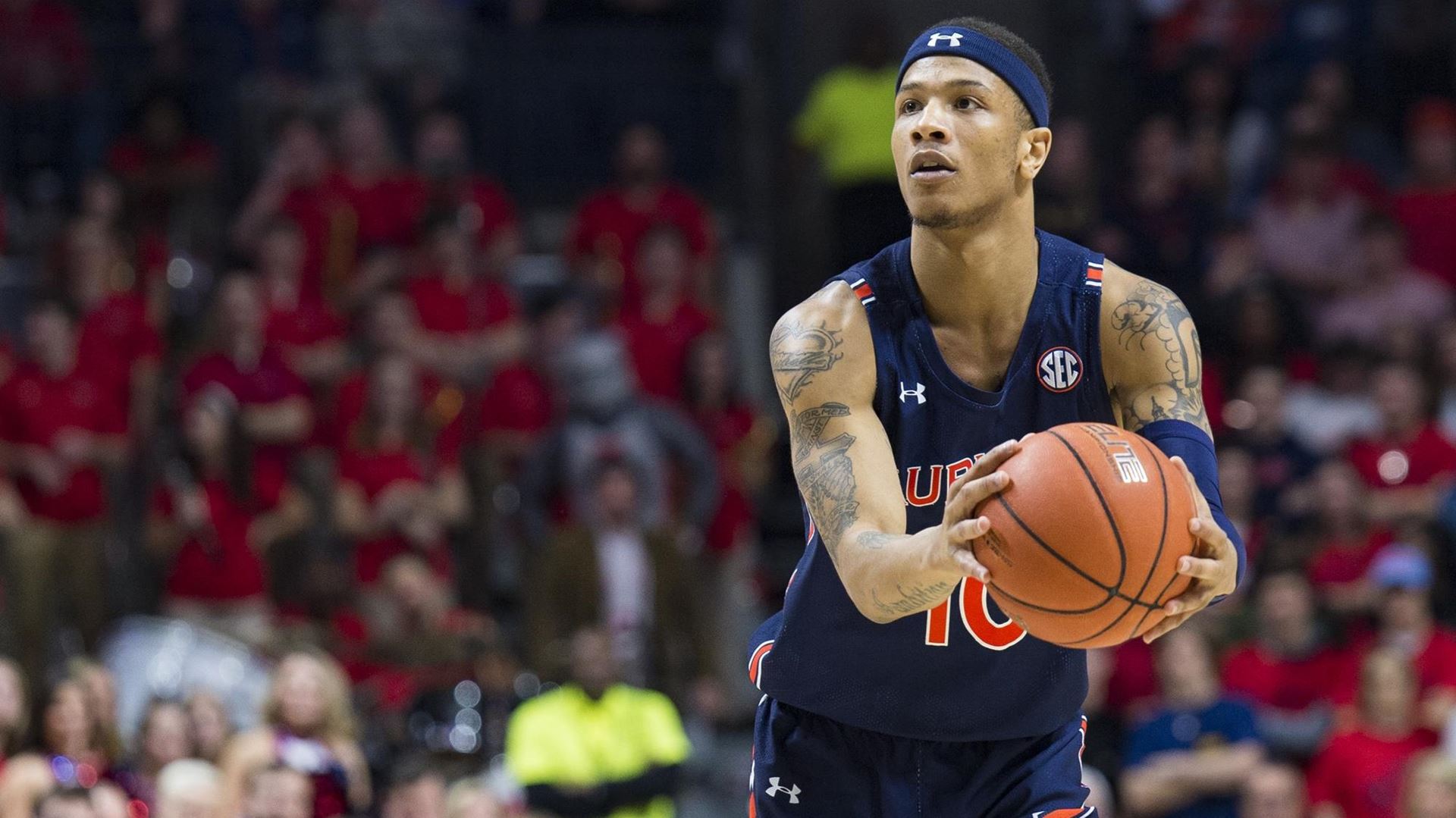To have watched Auburn's 91-90 overtime win over LSU this past Saturday afternoon, one would never know college basketball has implemented a more challenging 3-point line this season.
The two sets of Tigers combined to make 30 shots from 3-point range, connecting on 39.5% of those attempts. That accuracy went up during the extra five minutes, when Auburn and LSU combined to make six of nine tries from the lengthy distance of 22 feet, 1.75 inches.
Auburn set a Southeastern Conference record last season with 454 made 3-pointers, when the likes of Bryce Brown, Jared Harper and Chuma Okeke led the Tigers to the program's first NCAA tournament Final Four. This season, Samir Doughty and J'Von McCormick have been given the freedom to fire away for Bruce Pearl's Tigers, who are 21-2 and ranked No. 11 in the country.
"Samir and J'Von get open looks and make open looks," Pearl said Saturday during a news conference. "They're seniors, and they're always in the gym. They have confidence, and when you play-call for them and they know their number is being called to take those shots - it's what we want."
Most SEC games this season, however, have looked nothing like the end of the Auburn-LSU thriller from a 3-point-shooting standpoint.
The NCAA announced last June that the 3-point distance would be lengthened from the 20-foot, 9-inch distance that had been intact since the 2008-09 season. The new length matches that of international competition, with Tennessee coach Rick Barnes among those on the NCAA rules committee who voted for the change.
Tennessee shot 36.7% from 3-point range last season but is at 30.4% this season through 23 games, with that drop of 6.3% marking the sharpest decline among SEC teams from a year ago. Volunteers senior guard Jordan Bowden is off 11.4%, having made just 26.4% of his 3-point attempts after making 37.8% last season.
The Vols have plenty of company when it comes to declining numbers, with Missouri off 6.2% from a season ago on 3-point accuracy and Auburn off 6.1%.
"Every year, there are going to be people who try to make an early assessment, but I don't think we'll know the effect until the year is over with and we look at it," Barnes said. "The percentage, if it goes by what normally happens, will go down a little bit, but it always comes back. From our vantage point, I don't think it's impacted us a lot."
Alabama and Vanderbilt are the two SEC programs actually ahead of last season's 3-point accuracy clip. The Crimson Tide are averaging a league-leading 34.8% from 3-point range, up from 34.0% last season, with junior guard John Petty ranking among the league's top three in 3s made (68) and 3-point accuracy (44.4%).
Petty shot 37.2% from long range as a freshman and 34.5% last season.
Vanderbilt has increased its 3-point rate from 31.1% to 32.7%, with sophomore Aaron Nesmith having made a staggering 60 of his 115 attempts (52.2%) before being shelved for the season with a stress fracture in his foot during a loss at Auburn in early January.
"With the new line, we're all playing farther out, and that's the way you teach it," South Carolina's Frank Martin said. "I think it's making everyone understand that good shooters are going to make the adjustment, and the guys who are not as good need to practice a little more, because it's a harder shot.
"In corner 3s, you don't have as much space, so it's different footwork on the shooting. As a coach, you never teach players to play on the line. You teach them to play farther away from the line, and with the old line the floor spacing and the shots used to be where the new line is now."
Alabama is averaging 29.2 attempts from 3-point range under first-year coach Nate Oats after averaging just 21.1 last season. Before this season even started, Oats established a taped 4-point line in practice that sits three feet back from the new college distance.
Echoing Martin's sentiment, Oats set that 4-point line to improve spacing.
"You kind of have steppers and huggers," Oats told reporters. "We don't want our guys hugging the 3-point line. We want them stepping into the 3-point line on the catch, so if they're behind the 4-point line then they can step into the 3-point line."
Auburn is not matching its average of 30.1 3-point attempts per game last season, but the Tigers aren't too far off at 27.0. Their average is on the rise after attempting 31 last Wednesday night at Arkansas, a 79-76 overtime triumph, and a whopping 44 against LSU.
Though percentages are mostly down, teams don't seem to be shying away from the longer distance.
"I'm all about always trying to do whatever we think we need to do to get better," Barnes said, "and the overwhelming majority wanted to move the line back."
Contact David Paschall at dpaschall@timesfreepress.com or 423-757-6524.

